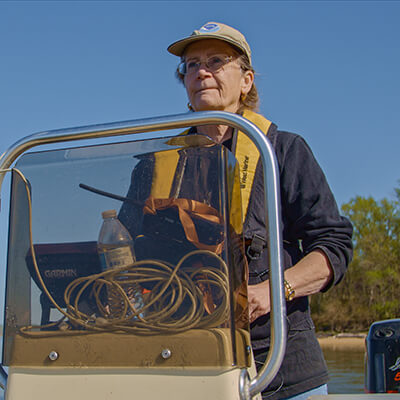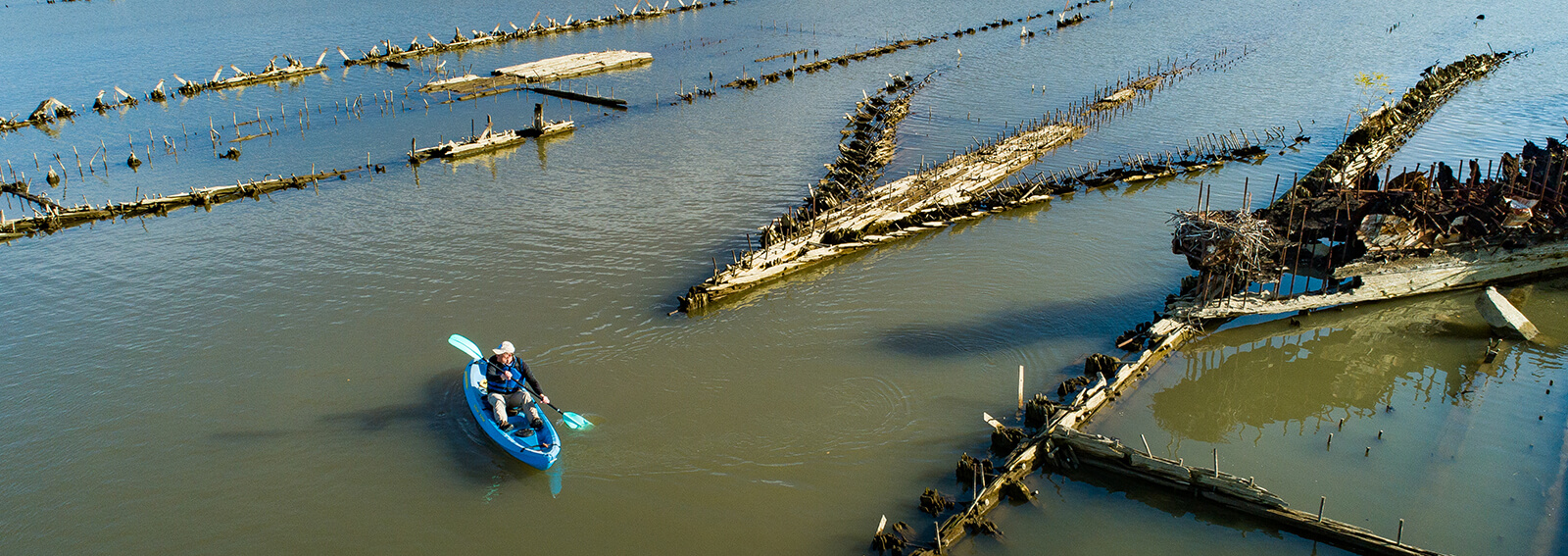Protecting the Ghost Fleet
Stories from the Blue: Susan Langley

In 2019, NOAA designated Mallows Bay-Potomac River National Marine Sanctuary, the first new national marine sanctuary in almost 20 years. Susan Langley, the Maryland state underwater archaeologist, formerly served on the Monitor National Marine Sanctuary Advisory Council and was instrumental in this new site designation.
I first came to Mallows Bay in 1995 with Don Shomette, a well-known maritime author who wrote The Ghost Fleet of Mallows Bay. I was just besotted from the beginning. I wanted to see this place become a park or a sanctuary.
Mallows Bay is a fantastic site – we have the largest homogeneous collection of ship remains in the Western Hemisphere. In 1917, the government planned to build a thousand vessels in 18 months for the World War I war effort. They weren’t military vessels; they were to carry food and troop supplies across the Atlantic for the Allies.
The fact that they planned to build a thousand of them meant suddenly we had to have merchant mariners, not naval sailors – enough to crew a thousand vessels. We’ve always had American merchant mariners, but this was the formalization of the American Merchant Marine.
Although nearly 300 ships were built, the war ended before the fleet was complete. Some of them carried cargo to Hawai‘i and elsewhere, but none made it to the theater of war. After the war, some did cross to Europe, a few of them were sold to private owners, and most were sold for salvage. Western Marine and Salvage bought most of the ships and kept them in the Potomac River near Mallows Bay. They would take a few at a time to Alexandria to break them down for scrap metal. Those remaining in the Potomac would occasionally catch fire, break loose, and become hazards to navigation, so the company was ordered to corral them and they burnt a large number of them to the waterline before floating them into Mallows Bay.
In 10 years I want to look back and see how many more vessels we've found, how many more stories we can tell.”
Western Marine and Salvage Company went bankrupt during the Depression era, which opened the door for local communities on both sides of the river to salvage the ship remains and derive needed income. At the start of World War II, Baltimore’s Bethlehem Steel initiated the third and final shipbreaking period, lasting only two years. Since then, natural events have shaped the number and integrity of ships remaining in Mallows Bay. There are still about 100 in the sanctuary. They are now an integral part of the environment: they act as artificial reefs and serve as nurseries for fish stock. Birds nest here, and the history is just absolutely amazing.
In addition to the Ghost Fleet, we have a former Sea Scout boat. We may well have a Revolutionary War era vessel, and there’s a Civil War encampment in the area. The history just keeps coming. As a sanctuary, we can devote more time to surveying. In 10 years, I want to look back and see how many more vessels we've found, how many more stories we can tell.
I take my students and everybody who comes to visit me to Mallows Bay. The more people who see it, the more excited they become. It’s the perfect place to paddle and kayak and every season there’s something different to see. Sometimes in the mornings in the spring, mist comes off the water, and the sunrise outlines the ships’ silhouettes.


